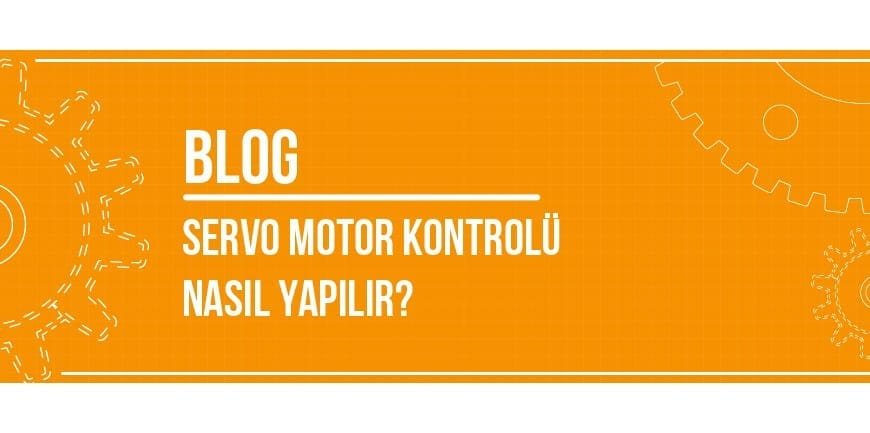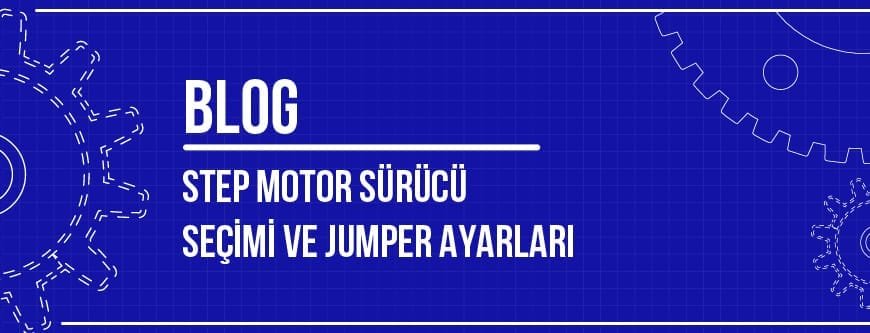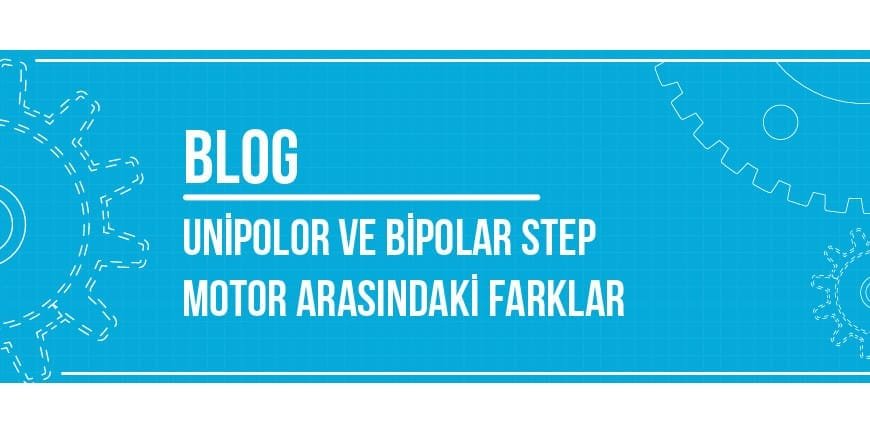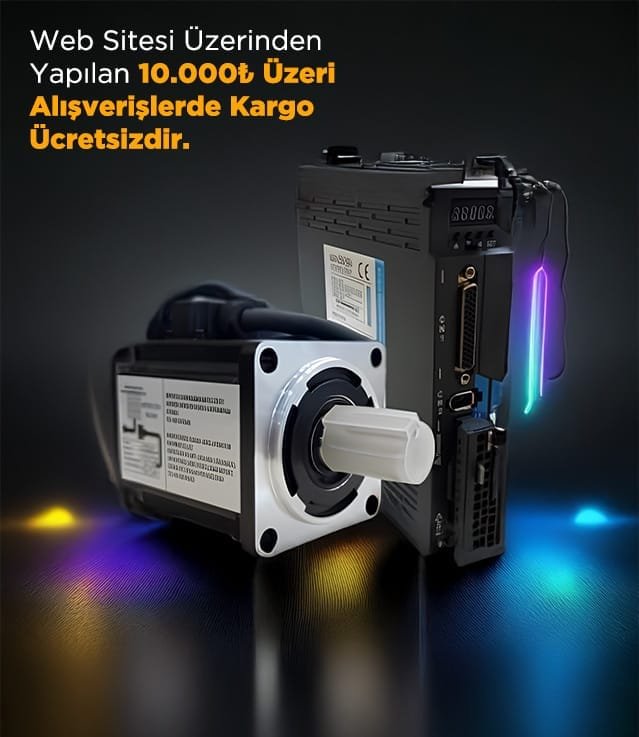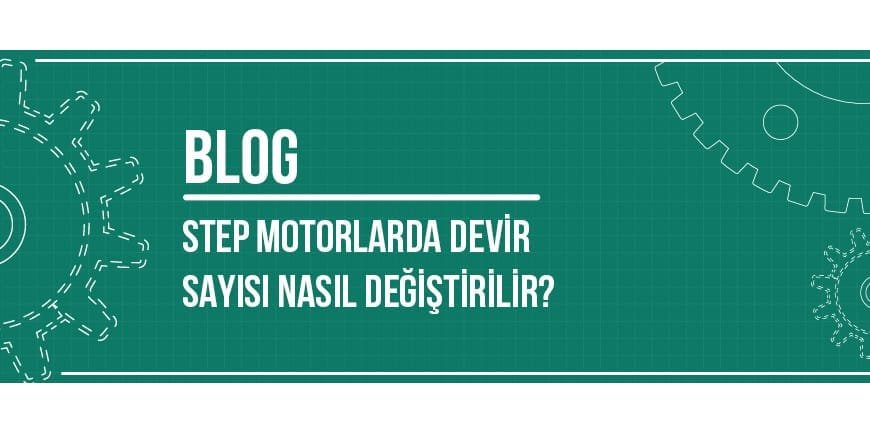
İçindekiler
How to Change the Speed of a Stepper Motor?
Stepper motors are important components used in many areas such as industrial automation, CNC machines, 3D printers, and robotic applications. For these motors to work properly, the speed must be set correctly. Changing the speed determines the motor’s speed and performance. So, how do you change the speed in stepper motors? In our article titled “How to Change the Speed in Stepper Motors,” we will answer all these questions. We wish you all a good day.
What is the Speed of Stepper Motors?
The number of revolutions, which is very important for stepper motors, generally refers to the number of full steps taken by the motor in one minute. This number of steps is expressed as “steps per minute” (SPM). This number of steps is determined by the pulse frequency generated by the motor driver based on the control signals of the stepper motor.
High speeds are generally required in high-speed applications, but they can also be preferred in lower-speed, high-torque applications. For this reason, the speed of the stepper motor should be adjusted taking into account factors such as the motor’s maximum speed, marked step angle, and the driver’s processing capacity. When the correct settings are made, stepper motors can be used in a wide range of applications, providing high accuracy and control.
Why is the speed important in stepper motors?
The speed of stepper motors is critical in many applications, as it determines the motor’s rotational speed. Therefore, attention must be paid to the speed of stepper motors. This ensures that the motor operates at the desired speed and performance. Stepper motors used in fields such as industrial automation, CNC machines, 3D printers, and robotic systems require precise speed and accuracy, so the RPM must be carefully controlled.
At the same time, correctly adjusting the speed of stepper motors prevents the motor from overheating and increases its durability. Incorrect speed selection can cause the motor to operate with unwanted vibrations or be damaged under excessive load. Therefore, correctly determining the speed ensures that the stepper motor operates reliably and efficiently and best meets the requirements of the application.
What Factors Affect the Number of Revolutions?
There are many important factors that determine the speed of stepper motors. All of these factors ensure that stepper motors work better and more accurately. This makes work processes more efficient. These factors can be divided into six categories. Let’s take a closer look at each of them:
- Pulse Frequency:
Pulse frequency is an important factor affecting the number of revolutions. The number of pulses sent directly by the driver increases the number of revolutions as soon as it starts to increase. Thus, we can say that pulse frequency and the number of revolutions are parallel.
- Engine Specifications:
Another factor affecting the RPM is the engine specifications. Engine specifications generally affect the RPM. At this point, it would be wrong to say anything definitive, as engine specifications vary depending on the brand. Therefore, it would be more reasonable to know the exact brand of the engine before commenting on the RPM.
- Driver Type:
Stepper motor drivers used in stepper motors can affect the speed depending on their structure and quality. For example, if the servo motor driver is a low-quality driver, it can reduce the speed. Therefore, you need to analyze the speed you need carefully before making your choice.
- Load Moment Requirement:
The torque requirement of the load on which the stepper motor will operate is one of the main factors affecting the speed. This factor directly affects the speed of the motor. For example, applications with higher torque requirements require lower speeds.
- Other Factors in the System:
Factors such as the application’s operating environment, the type of equipment used, and environmental conditions can also affect the speed. All of these factors play a role in determining the correct speed of the motor.
How can I change the speed of a stepper motor?
One of the most frequently asked questions regarding the use of stepper motors is “How can the speed of stepper motors be changed?” Although this question may seem complicated, it has a fairly simple and effective solution. Let’s take a closer look at these solutions.
- Driver Settings: Stepper motors are usually controlled by a driver. This driver generates the control signals needed to determine the motor’s speed. Many stepper motor drivers provide a potentiometer or digital interface for adjusting the speed. These settings can usually be made using buttons or adjustment panels on the driver.
- Control Signal Frequency: Adjusting the control signal frequency, which is an effective method for adjusting the number of revolutions, affects the operating speed of the stepper motor. Therefore, changing the frequency requires changing the control signal frequency.
- Microcontroller and PLC Program: Step motors are typically controlled by a microcontroller or PLC (Programmable Logic Controller). These programs can be used to adjust the motor’s speed. The microcontroller and PLC program can adjust the control signal frequency or o
- Stepper Motor Driver Software: Some stepper motor drivers come with special software for adjusting the motor speed. This software can be used to configure the driver and adjust the speed via a computer.
So, how do you change the rotation direction in stepper motors?
Another factor affecting the performance of a stepper motor is the direction of rotation, which can be achieved through certain procedures. Contrary to popular belief, this can be done with fairly simple procedures. These procedures consist of five steps. They are: Changing the Coil Connections, Changing the Driver Settings, Controlling with Programming, Reversing the Control Signal, and Changing with Cables.
- Changing the Coil Connections
In stepper motors, the order and connection of the coils largely determine the direction of rotation. Therefore, you may need to change the coil connections to change the direction of rotation.
- Changing Driver Settings
Step motors can also be controlled using driver settings. This usually involves factors such as motor control parameters, number of steps, and speed. This allows step motors to be quickly directed.
- Control through Programming
Another solution for easily changing the stepper motor is control through programming. With a programming language, you can easily control the direction of the stepper motor. This method is generally preferred in more complex and customized situations.
- Replacement with Cables
Another simple method for changing the rotation direction of a stepper motor is to change the motor’s cable connections. You can change the motor’s rotation direction by reversing the motor’s cable connections or swapping the positions of two phases. However, this method must be performed carefully, as it requires ensuring that the correct cable connections are made and that the motor is functioning properly.
- Control Signal Inversion:
Another method of changing the direction of rotation of the motor is to reverse the control signal. This is usually done by changing the frequency or polarity of the control signal. Reversing the control signal changes the direction of rotation of the motor, and this is usually done in the software of the driver or control system.
The Importance of Correctly Setting the Speed in Stepper Motors
It is very important to set the speed of stepper motors correctly. Failure to do so may result in certain problems. For example:
- Errors may occur in delicate movements.
- A stepper motor may be damaged if it is operated at a speed higher than its maximum capacity.
- Energy efficiency may decrease and the system may consume more energy.
- If not adjusted correctly, step motors may overheat and vibrate.
- Stepper motors operating at the wrong speed may fail more quickly than stepper motors operating at the correct speed.
- It can also significantly increase maintenance and repair costs.
You have high-quality stepper motorsYou can enjoy the benefits of Şahin Rulman. This allows you to maximize efficiency in your business processes.
Diğer Blog Yazılarımız



